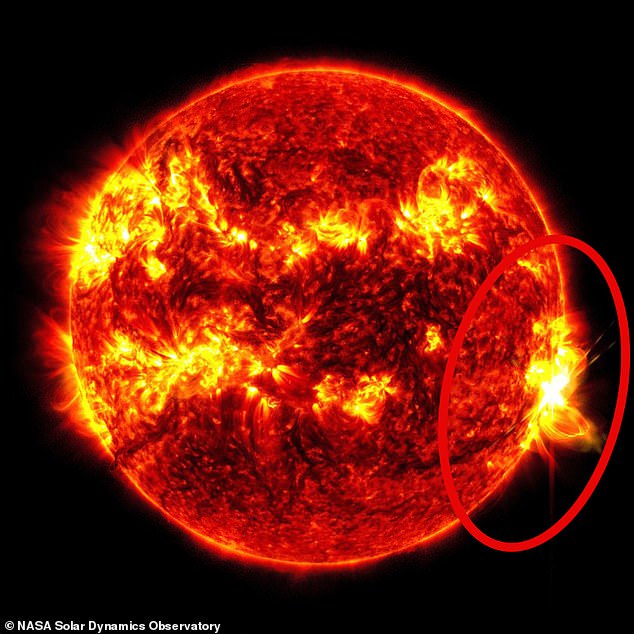After a week of massive solar storms, the Sun just erupted with the largest solar flare in half a decade.
Stunning video captured by NASA’s Solar Dynamics Observatory shows the moment the colossal explosion sent plumes of plasma into space.
This burst of radiation was the largest since the start of the solar cycle in 2019 and was even larger than the flares that triggered last week’s stunning northern lights.
Unfortunately, any hopeful stargazers will be disappointed to learn that this massive eruption is not likely to cause any more auroras.
However, experts warn that it could still cause disruption to radios and GPS satellites around the world.
The solar flare, classified as X8.8, was the strongest of this solar cycle that began in 2019. Circled in red is the solar flare as it emerged from a sunspot on the western side of the sun.
At 16:51 BST yesterday afternoon, the National Oceanic and Atmospheric Administration’s (NOAA) Space Weather Prediction Center detected a huge solar flare.
NASA’s Solar Dynamics Observatory captured this incredible thing across the electromagnetic spectrum.
The videos reveal how arcs of plasma captured by magnetic fields spun and spun as the flare built up.
And, when the resulting explosion ripped away the western face of the Sun, the radiation was so powerful that it even appeared to disrupt NASA’s specialized cameras.
Classified as an X8.7 class flare, the explosion dwarfed last week’s flares that reached only X2.2.
However, experts say the flare may have been even larger than their measurements suggest.
As these videos show, the flare emerged just beyond the sun’s western horizon, giving Earth some protection from the radioactive blast.
However, while this might have kept Earth safe, it also means there is very little chance of seeing the Northern Lights this weekend.
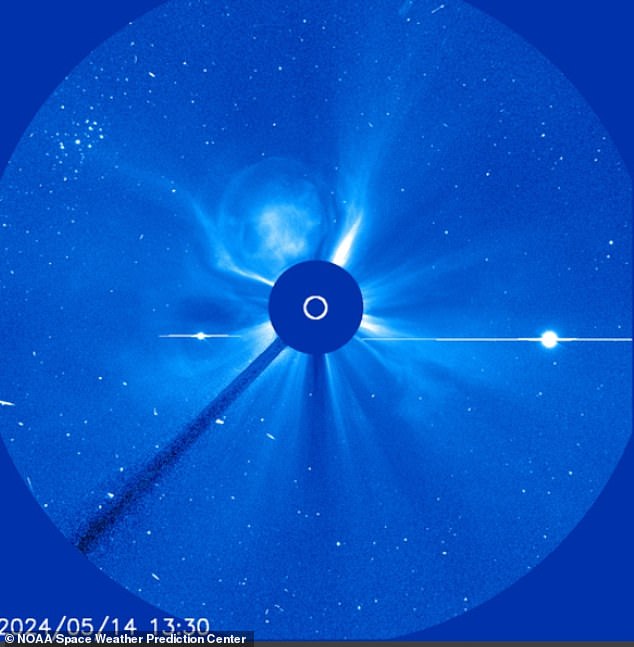
The powerful X-class flare emerged from the sun just over two hours before high-frequency radio blackouts were reported in the US and parts of South America.
Dr Greg Brown, an astronomer at Royal Greenwich Observatory, told MailOnline: “This flare is unlikely to produce any major auroras for the simple reason that it is not pointing in our direction.”
“For a coronal mass ejection, which often accompanies flares like this, to produce an aurora on Earth, the spray of particles from the Sun must impact the Earth’s atmosphere.”
The Met Office predicts that Earth could be hit by two more solar flares in the coming days, although any auroral activity will be limited.
A Met Office spokesperson told MailOnline: “While there was a large solar flare, due to the location of the sunspot, coronal mass ejections coming from that area will largely miss the Earth.”
“Any coronal mass ejections that arrive in the coming days will have fewer impacts, as they are not likely to directly impact Earth like those last weekend.”
While the effects on the northern lights may be limited, this solar flare is already having an impact on Earth’s communication systems.
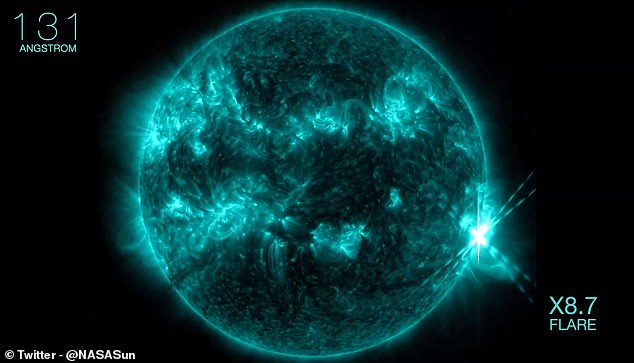
Solar flares like this produce massive amounts of ultraviolet radiation that change the way radio waves pass through our atmosphere. This can cause radio blackouts on certain frequencies.
When this radiation reaches Earth, it changes the way radio signals pass through parts of the upper atmosphere.
This means that large flares can affect GPS navigation services, communications systems and other technologies.
NOAA reported severe radio blackouts across North America at around 17:51 BST (12:51 ET).
Users of high-frequency radio waves experienced a complete or intermittent loss of service when the Earth was bombarded with radiation.
Dr Brown said: “Although the flare itself is not pointing in our direction, it is likely to cause interference to certain radio communications.”
«It should only affect high frequency or short wave radio signals. This is often used for military communications, amateur radio and some forms of radar.
Solar flares are caused by magnetic field lines in the Sun’s volatile outer layers that tangle and break apart, releasing powerful bursts of x-rays and ultraviolet radiation.
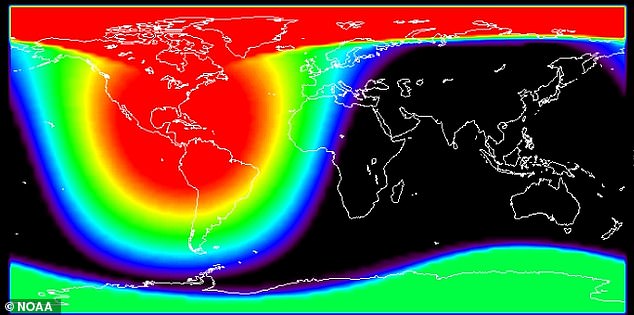
Communications disruptions were reported in North and South America around 12:51 ET, as shown here in the red regions near the pole and in America.
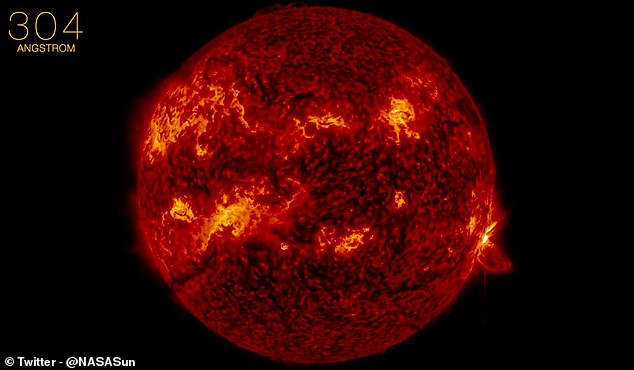
The sunspot responsible for the flare, visible as a bright region on the far left of this image, is now spinning away from Earth. However, there is a chance he will survive long enough to turn around and face us again in about two weeks.
These field lines form over cooler areas of the Sun’s surface known as sunspots, which appear as dark spots to our telescopes.
The particular sunspot responsible for last week’s solar storms and this recent flare is called sunspot active region 3664, which is so vast that it could comfortably hold 15 Earths aligned edge to edge.
This makes it about the same size as the sunspot that triggered the Carrington event of 1859 in which a solar flare burned down telegraph stations and cut off communications around the world.
This sunspot has now rotated toward the back face of the Sun, meaning Earth will be protected from future explosions.
However, this active region can still retain its structure long enough to rotate toward Earth in about two weeks.
And, with the Sun at the peak of its 11-year activity cycle, there are likely to be more sunspots and more flares in the near future.

